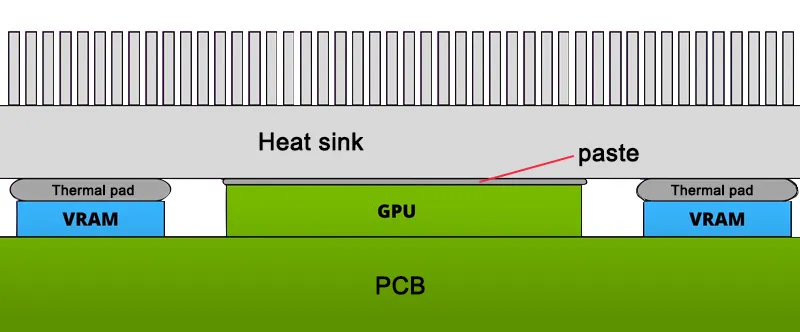What Is a Thermal Resistance and Thermal Impedance?
- Posted on:2023-03-15 14:14:00
- Source:AOK Thermal Pad Manufacturer FAQs
Thermal resistance (R) is an empirical property derived from the often-used analogy between electrical and thermal conduction:
Equation: R = T1 - T2 / q = △T / q
where: T1 = component temperature
T2 = heat-sink temperature
Thermal resistance is commonly expressed in units of °C/W or degree-C per Watt.
Thermal impedance (Z) is defined as the temperature gradient per unit of heat flux, (q / A), passing through the interface. It's calculated by simply multiplying thermalresistance by the component area:
Equation: Z = △T / (q / A) = R • A
Thermal impedance is expressed in units of °C-in2/W - degree-C inch squared perWatt or C-cm2/W - degree-C centimeter squared per Watt.
Thermal resistance and thermal impedance are not material properties and should be determined individually for each component/heat-sink configuration. In contrast to thermal conductivity, impedance and resistance reflect the geometry of the assembly,i.e., the size of the component area (“footprint") and the thickness of the interface material. In addition, they account for any effects that impact on the ability of the material to transfer heat between the component and the heat sink (interface resistance).
Therefore, thermal resistance or impedance are important practical characteristics that often more accurately reflect heat-dissipating capability than thermal conductivity, which neglects interfacial effects. Since they differ only by aconstant factor (i.e., the component area), thermal resistance and thermal impedance are basically interchangeable.
If you would like to learn more about AOK performance thermal materials, please visit our website at www.aok-technologies.com.


